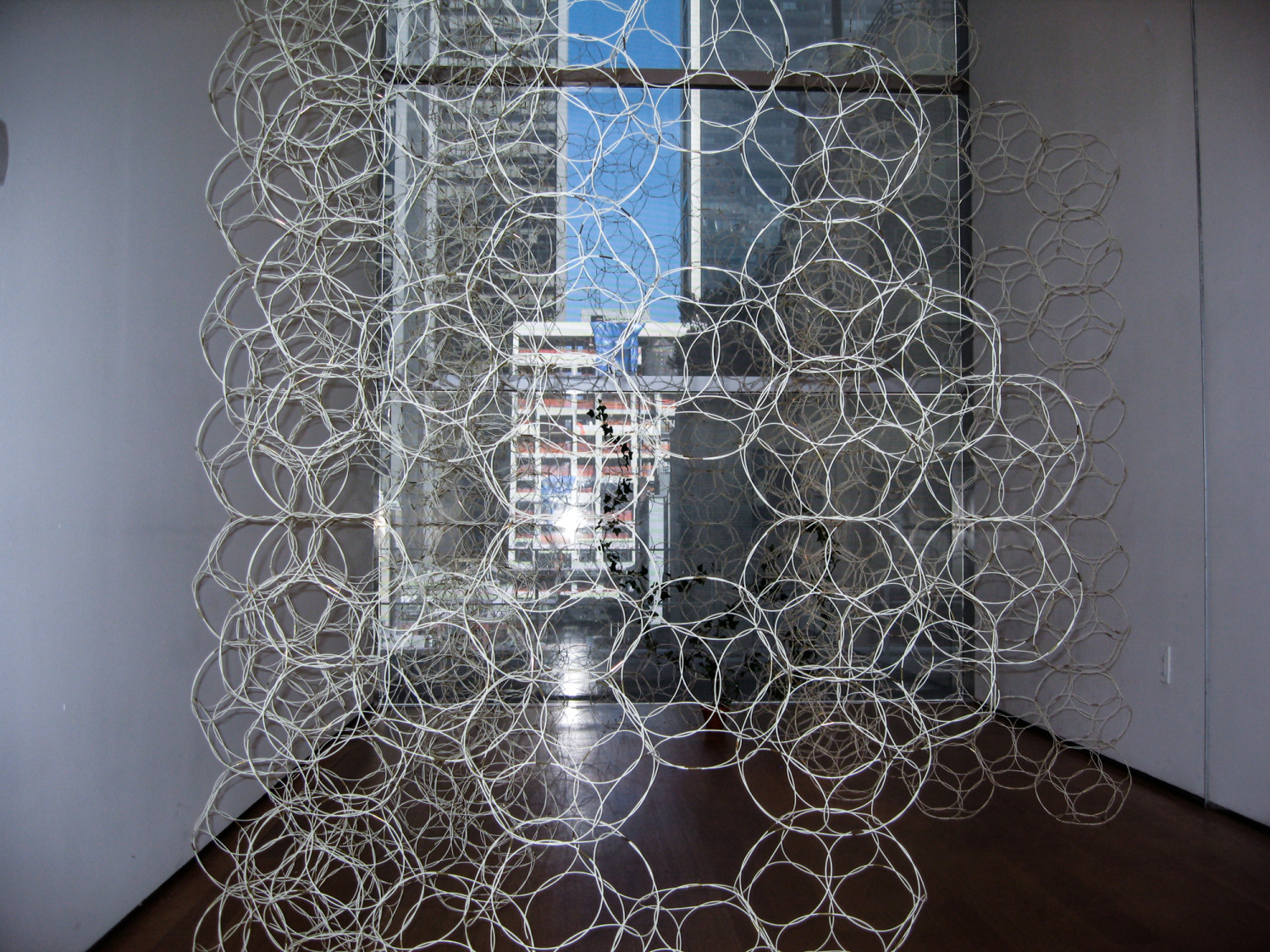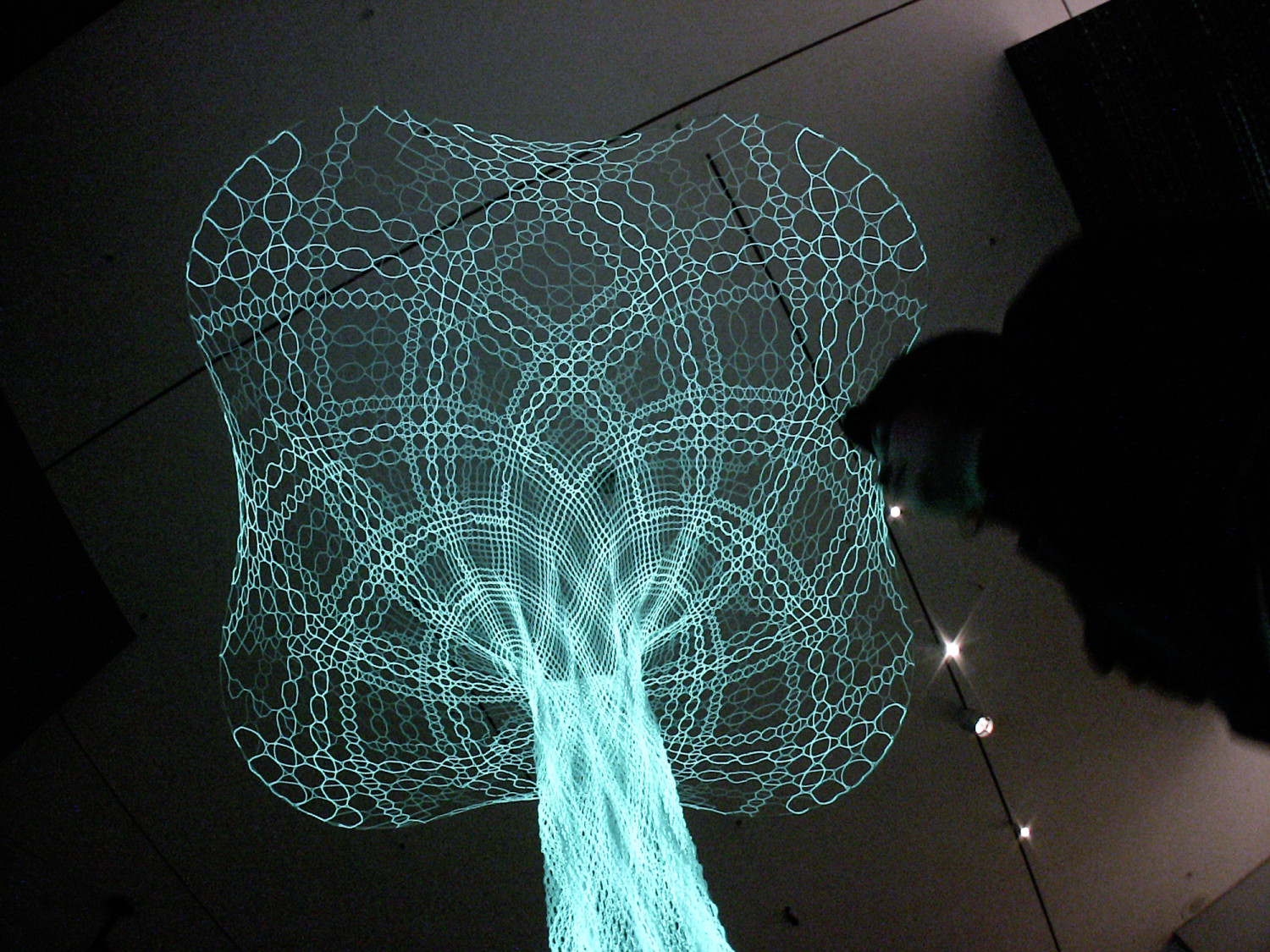We were invited and commissioned to present our recent experiments in responsive textile architecture at the MoMA, New York.
We exhibited BioWall in a curved spatial configuration. A series of free standing, curved walls were placed at the entrance to the gallery inviting people to walk between the latticework. We were also commissioned to produce a new version of Sonumbra, with animated lace and soundscape.
We are very pleased that the Department of Architecture and Design has agreed to include our Biowall in the MoMA collection.

We exhibited BioWall in a curved spatial configuration. A series of free standing, curved walls were placed at the entrance to the gallery inviting people to walk between the latticework.
“In the past few decades, individuals have experienced dramatic changes in some of the most established dimensions of human life: time, space, matter, and individuality. Working across several time zones, traveling with relative ease between satellite maps and nanoscale images, gleefully drowning in information, acting fast in order to preserve some slow downtime, people cope daily with dozens of changes in scale. Minds adapt and acquire enough elasticity to be able to synthesize such abundance. One of design’s most fundamental tasks is to stand between revolutions and life, and to help people deal with change. Designers have coped with these displacements by contributing thoughtful concepts that can provide guidance and ease as science and technology evolve. Several of them—the Mosaic graphic user’s interface for the Internet, for instance—have truly changed the world. Design and the Elastic Mind is a survey of the latest developments in the field. It focuses on designers’ ability to grasp momentous changes in technology, science, and social mores, changes that will demand or reflect major adjustments in human behavior, and convert them into objects and systems that people understand and use.
The exhibition highlights examples of successful translation of disruptive innovation, examples based on ongoing research, as well as reflections on the future responsibilities of design. Of particular interest will be the exploration of the relationship between design and science and the approach to scale. The exhibition will include objects, projects, and concepts offered by teams of designers, scientists, and engineers from all over the world, ranging from the nanoscale to the cosmological scale. The objects range from nanodevices to vehicles, from appliances to interfaces, and from pragmatic solutions for everyday use to provocative ideas meant to influence our future choices. The exhibition will be accompanied by a fully illustrated catalogue.” (text from MoMA)
Curated by Paola Antonelli from the Department of Architecture and Design.
LINKS: MoMA

Commissioned to present our recent experiments in responsive textile architecture at the MoMA, New York. Sonumbra is the worlds first fully animated lace-architectural work.